The Vietnam passport plays an essential role for Vietnamese citizens when traveling, working, or visiting relatives abroad. It not only serves as a valid international document but can also prove the holder’s identity and nationality. In this article, we will discuss important changes to the Vietnam passport sample and what you need to know.
The Latest Official Vietnam Passport Samples
According to Decree No. 31/2023/TT-BCA issued by the Ministry of Public Security, there are now four types of Vietnam passports starting from August 15, 2023:
- Diplomatic passport: Brown-red cover, code HCNG
- Official passports: Dark green cover, code HCCV
- Standard passport: Purple-blue cover, code HCPT
- Standard passport issued through simplified procedures: Black cover, code HCPT-RG
Compared to previous regulations, the Ministry of Public Security has added the standard passport issued through simplified procedures.
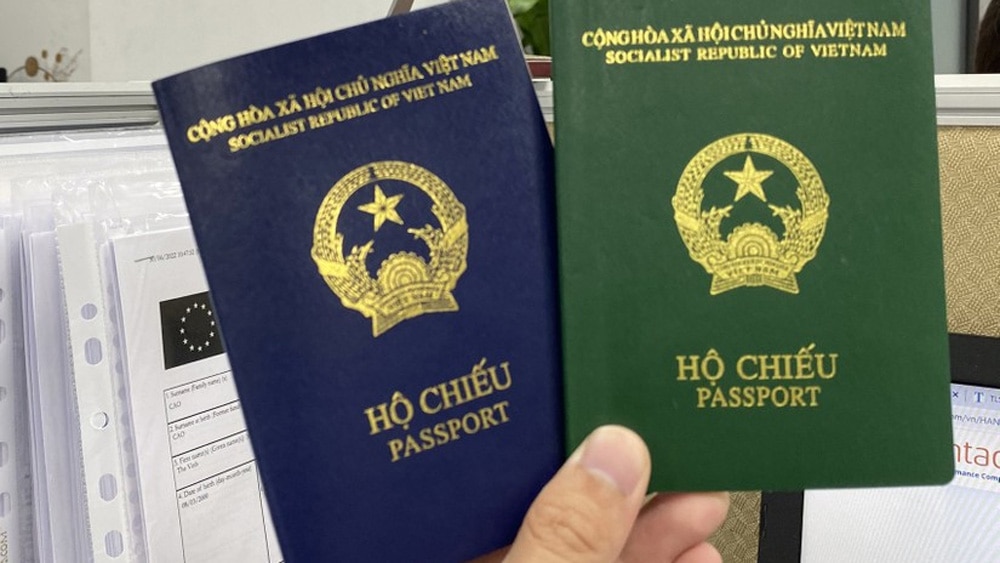
Things to Know About the New Vietnam Passport Sample
The new Vietnam passport sample (standard passport issued through simplified procedures) is 12 pages long and has a validity period of up to 12 months. According to the Immigration Law of Vietnam, this passport is issued to the following individuals:
- Those who are overseas, have lost their standard passports, and wish to return to their country immediately.
- Those who are deported from host countries and lack passports.
- Those who are forced to return to their country under international treaties or repatriation agreements.
- Those who were granted passports due to national defense and security reasons.
The Updated Specifications of Vietnam Passports
Here are the updated specifications of the new Vietnam passport samples:
- The cover is printed with the national name, national emblem, and passport name.
- For chip-embedded passports, there is a symbol of the electronic chip.
- The pictures on the pages of the passport depict beautiful scenery of Vietnam, combined with bronze drum motifs.
- The languages used in the passport are Vietnamese and English.
- Diplomatic, official, and standard passports have 48 pages (excluding the cover). Standard passports issued through simplified procedures have 12 pages.
- The size of every passport adheres to ISO 7810 (ID-3) standards: 88mm x 125mm ± 0.75mm.
- The electronic chip is placed within the back cover of chip-embedded passports.
- The passport covers are made of synthetic plastic with high durability.
- The numbers and letters on the passport are punched with laser technology from page 1 to the back cover of the passport.
- All content and images printed in the passport are produced using modern technology, preventing the risk of counterfeiting, and meeting ICAO standards.
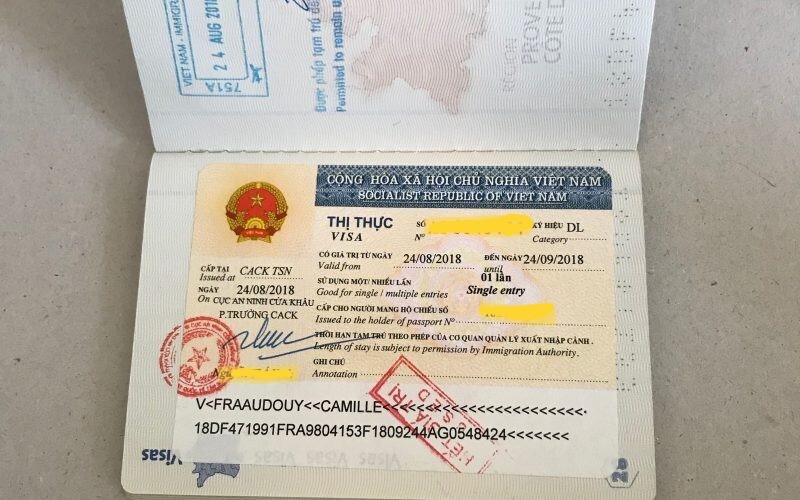
Conclusion
In conclusion, the new Vietnam passport samples have important changes that you need to know. The addition of the standard passport issued through simplified procedures can benefit individuals who require immediate assistance and need to return to their country promptly. The updated specifications of Vietnam passports ensure better security and prevent counterfeiting. If you plan to visit Vietnam, it’s essential to understand the requirements for obtaining a visa and relevant entry information. Consider visiting during the best time to visit Vietnam and stay in luxurious hotels and resorts provided by Vinpearl.
Vietnam Passport Photo Size: The Standard Guidelines to Follow
Applying for a passport is an essential process that requires you to adhere to specific guidelines, including the photo size. In this article, we will discuss the standard guidelines for Vietnam passport photo size.
Standard Guidelines for Vietnam Passport Photo Size
The guidelines for the Vietnam passport photo size are as follows:
- The photo must be in color and taken within the last six months.
- The photo should be 4×6 centimeters with a white background.
- The applicant’s face should take up 70-80% of the photo.
- The applicant should have a neutral expression with their mouth closed.
- The applicant should face the camera directly with their eyes open and visible.
- The applicant should not wear sunglasses or any headwear (except for religious purposes).
- The photo must not have any shadows or reflections.
- The photo should be clear and in focus, with no blurring or pixelation.
- The applicant should not wear any clothing that covers their face or obscures their features.
- The photo should not have any markings or alterations.
It is important to follow these guidelines to ensure that your passport application is accepted without delay.
Tips for Taking an Appropriate Vietnam Passport Photo
Here are some tips to help you take an appropriate Vietnam passport photo:
- Find a well-lit area with a plain white wall or backdrop.
- Use a high-quality camera or smartphone with a good resolution.
- Have someone else take the photo to avoid any awkward angles or distorted features.
- Dress appropriately and avoid wearing clothing that obstructs your face or neck.
- Remove any glasses, hats, or other accessories that may cause a shadow or reflection.
- Keep a neutral facial expression and ensure that your face is centered in the photo.
- Review the photo before submitting it to ensure that it meets the guidelines.
Conclusion
In conclusion, adhering to the standard guidelines for Vietnam passport photo size is vital to ensure a smooth and hassle-free passport application process. You can also follow the tips mentioned above to take an appropriate passport photo that meets the requirements. Remember to prepare your photo in advance before submitting your passport application to avoid any delays or issues.
Vietnam Passport Sample: Important Changes You Need to Know
The Vietnam passport serves as a crucial document for Vietnamese citizens when traveling, working, or visiting relatives abroad. It is not only internationally valid but can also prove the holder’s identity and nationality. In this article, we will discuss the latest updates on important changes to the Vietnam passport sample.
The Latest Official Vietnam Passport Samples
According to Decree No. 31/2023/TT-BCA issued by the Ministry of Public Security regarding Vietnam passport samples, starting from August 15, 2023, there will be four types of Vietnam passports:
- Diplomatic passport: Brown-red cover, code HCNG
- Official passports: Dark green cover, code HCCV
- Standard passport: Purple-blue cover, code HCPT
- Standard passport issued through simplified procedures: Black cover, code HCPT-RG
Compared to the previous regulations, the Ministry of Public Security has added the standard passport issued through simplified procedures.
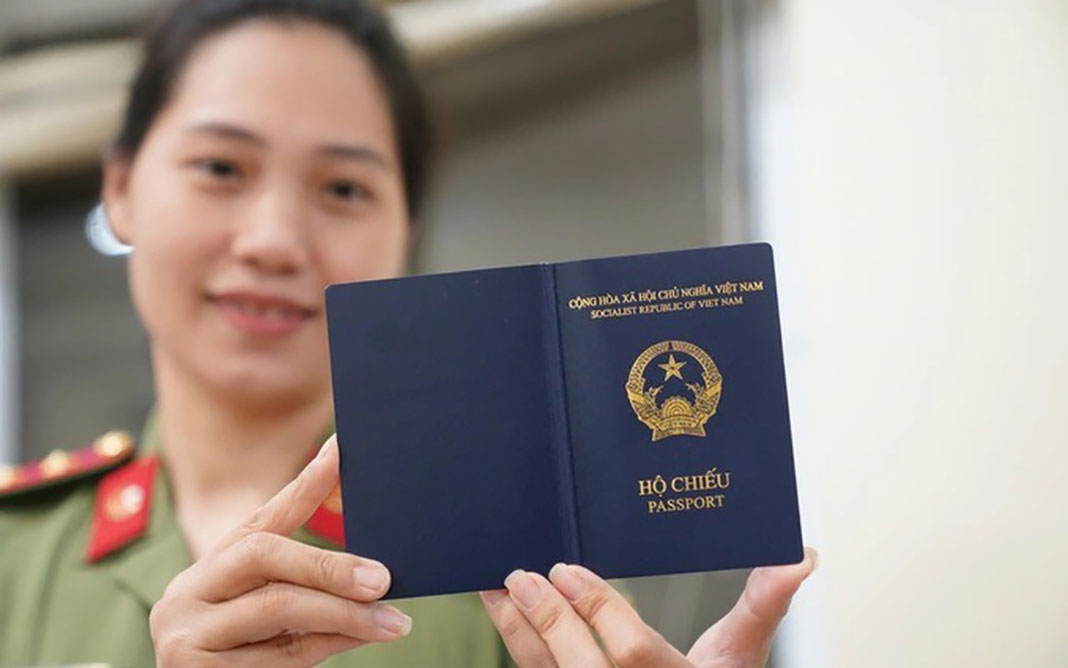
Things to Know About the New Vietnam Passport Sample
The new Vietnam passport sample (standard passport issued through simplified procedures) consists of 12 pages and has a validity of up to 12 months. According to the Immigration Law of Vietnam, this passport is issued to the following individuals:
- Those who are overseas, have lost their standard passports, and wish to return to their country immediately.
- Those who are deported from the host countries and lack passports.
- Those who are forced to return to their country under international treaties or agreements on repatriation.
- Those who were granted passports due to national defense and security reasons.
It is essential to note that this type of passport is not available for ordinary citizens and is only issued in specific circumstances.
The Updated Specifications of Vietnam Passports
These Vietnam passport samples have general specifications as follows:
- The cover is printed with the national name, national emblem, passport name.
- For chip-embedded passports, there is a symbol of the electronic chip.
- The pictures on the pages of the passport are beautiful scenery of Vietnam, combined with bronze drum motifs.
- The languages used in the passport are Vietnamese and English.
- Diplomatic, official, and standard passports have 48 pages (excluding the cover).
- Standard passports issued through simplified procedures have 12 pages.
- The size of every passport adheres to ISO 7810 (ID-3) standards: 88mm x 125mm ± 0.75mm.
- The electronic chip is placed within the back cover of chip-embedded passports.
- The passport covers are made of synthetic plastic with high durability.
- The numbers and letters on the passport are punched with laser technology from page 1 to the back cover of the passport.
- All content and images printed in the passport are produced using modern technology, preventing the risk of counterfeiting and meeting ICAO standards.
It is crucial to keep these updated specifications in mind when applying for or renewing your Vietnam passport.
Conclusion
In conclusion, the Vietnam passport sample has undergone important changes that Vietnamese citizens should be aware of. These changes include the addition of a new type of passport and updated specifications for all four types of passports. By keeping these changes in mind, Vietnamese citizens can ensure a smooth application process and have a valid passport that meets international standards.
Vietnam Passport Stamp: Crucial Information for International Visitors
If you are an international traveler planning to visit Vietnam, it is essential to stay informed about the Vietnam passport stamp and its requirements. In this article, we will discuss crucial information that international visitors need to know about the Vietnam visa passport stamp.
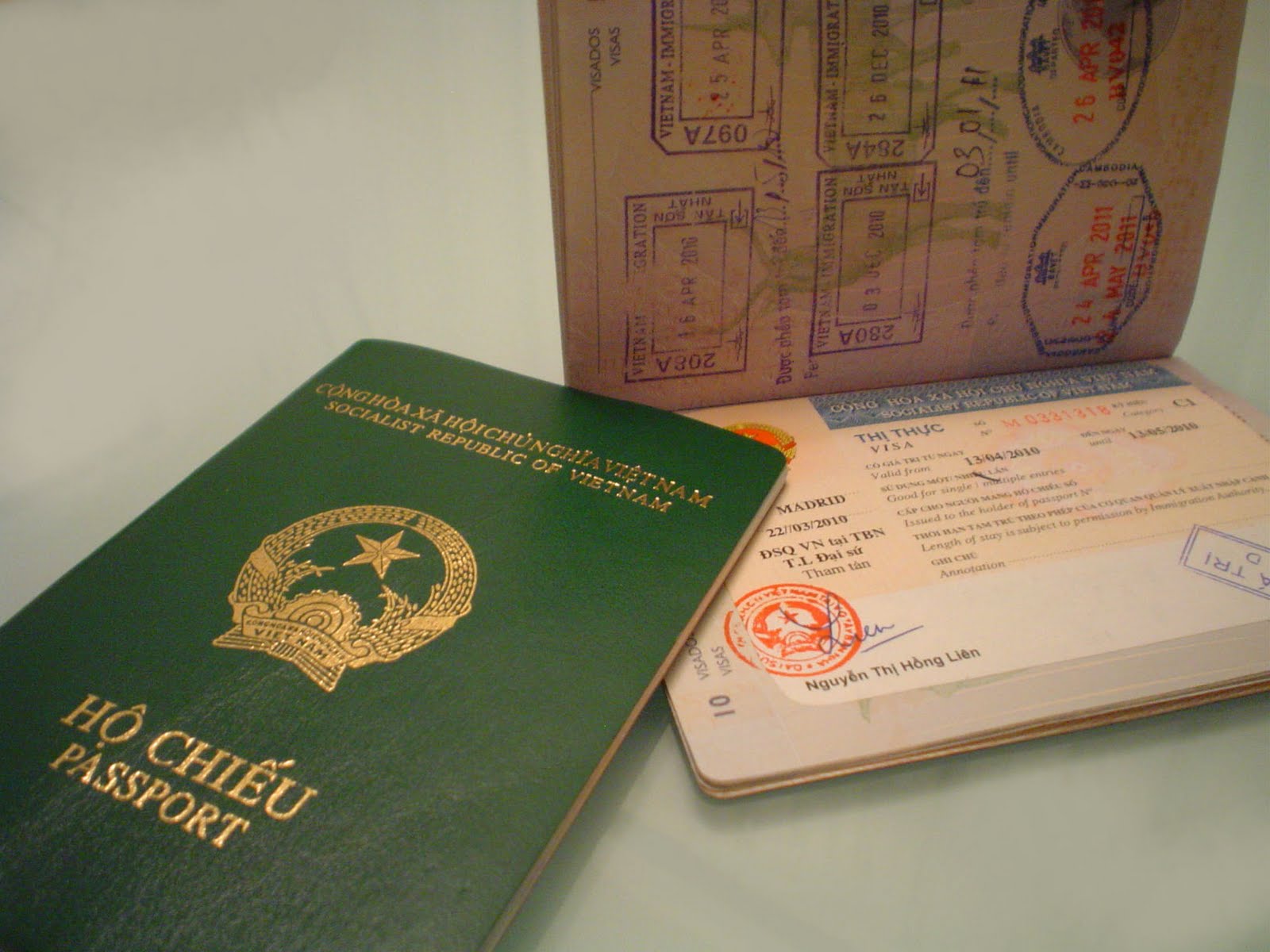
What is a Vietnam Passport Stamp?
The Vietnam passport stamp is an official endorsement placed on a traveler’s passport by immigration authorities upon entry or exit from Vietnam. This stamp indicates relevant information such as the date of entry or exit, visa type, and permitted duration of stay.
Who Needs a Vietnam Passport Stamp?
All international travelers entering or exiting Vietnam must have a valid passport and obtain a Vietnam passport stamp at the border checkpoint. This includes travelers who are exempted from obtaining a visa in advance, such as those from countries with visa exemption agreements with Vietnam.
How to Obtain a Vietnam Passport Stamp?
To obtain a Vietnam passport stamp, travelers should present their valid passport and other relevant documents (such as a visa or proof of visa exemption) to immigration authorities at the port of entry or exit. The immigration officer will then inspect the documents and place the necessary endorsements on the passport.
It is crucial to ensure that the passport stamp accurately reflects the traveler’s permitted duration of stay and visa type to avoid any issues during their visit.
Important Tips for Travelers
Here are some important tips for international travelers regarding the Vietnam passport stamp:
- Ensure that your passport is valid for at least six months beyond the date of entry into Vietnam.
- Check the visa requirements for your nationality and obtain the necessary visa or visa exemption before traveling.
- Make sure that the immigration officer accurately records the visa type and permitted duration of stay on your passport stamp.
- Keep your passport and other relevant documents safe throughout your visit to Vietnam.
- Avoid overstaying your permitted duration of stay, as this can result in fines, deportation, or other legal consequences.
By following these tips, international travelers can ensure a smooth and hassle-free experience with the Vietnam passport stamp.
Conclusion
In conclusion, the Vietnam passport stamp is a crucial requirement for all international travelers entering or exiting Vietnam. By staying informed about the stamp’s requirements and following essential tips, travelers can ensure a safe and enjoyable visit to Vietnam.
Vietnam E-Visa: A Convenient Way to Enter Vietnam
If you are planning to visit Vietnam for tourism or business purposes, obtaining a visa is an essential requirement. The traditional method of obtaining a visa involves visiting the Vietnamese embassy or consulate in your home country. However, with the introduction of the Vietnam e-visa system, travelers can now conveniently apply for and obtain their visas online. In this article, we will discuss important information about the Vietnam e-visa.
What is a Vietnam E-Visa?
A Vietnam e-visa is an electronic visa that allows international visitors to enter Vietnam for short-term stays for tourism or business purposes. This visa is valid for up to 30 days and can only be used for single entry into Vietnam. The e-visa is an alternative to the traditional visa application process and can be obtained entirely online.
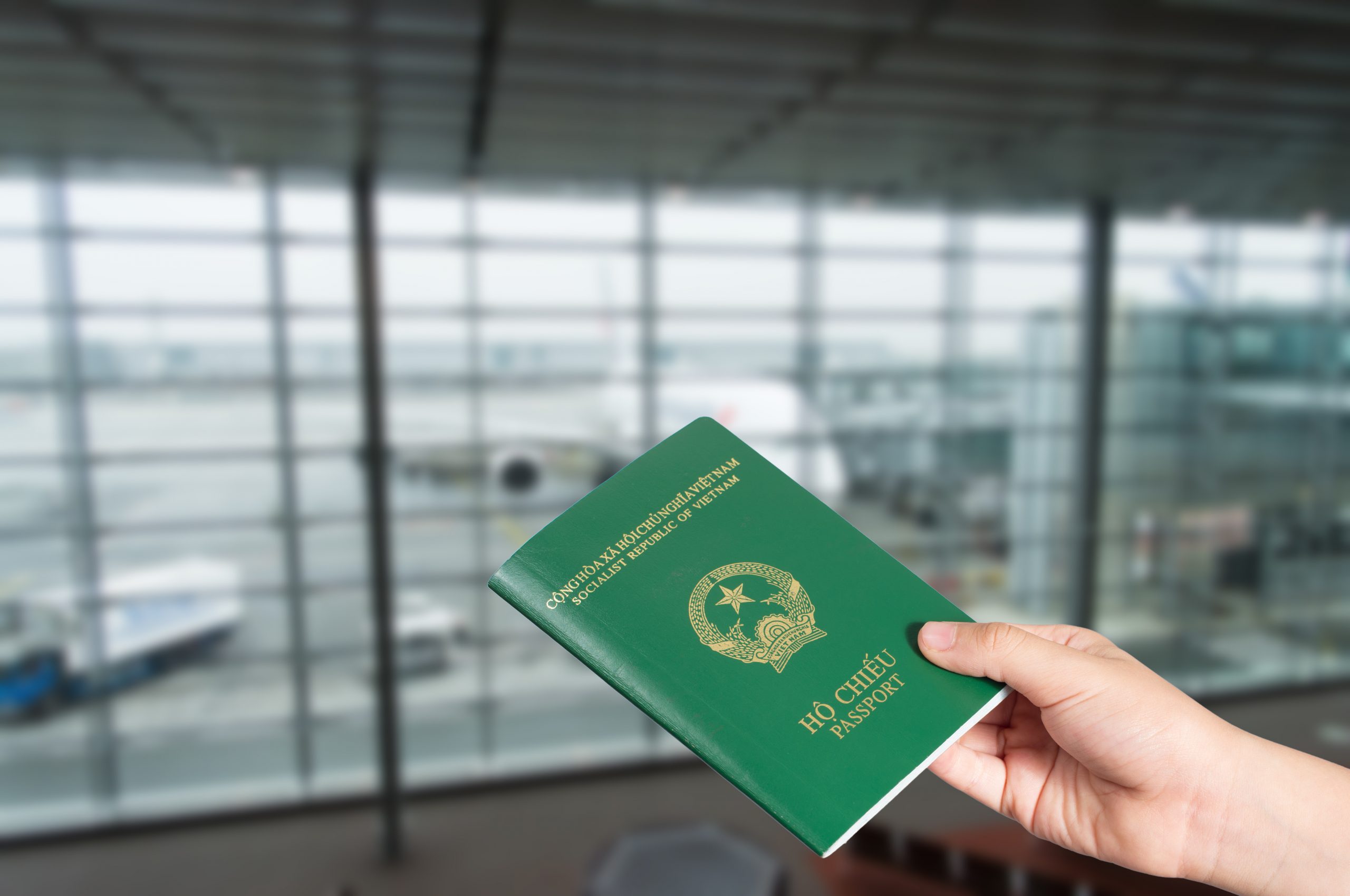
Who is Eligible for a Vietnam E-Visa?
Citizens from over 80 countries are eligible for the Vietnam e-visa, including the United States, Canada, Australia, and the United Kingdom. However, not all nationalities are eligible, so it is essential to check the eligibility criteria before applying.
How to Apply for a Vietnam E-Visa?
To apply for a Vietnam e-visa, travelers should follow these steps:
- Visit the official Vietnam e-visa website.
- Fill out the application form with accurate personal and travel information.
- Upload a recent passport-style photo and a scanned copy of the passport’s biographical page.
- Pay the visa fee using a credit or debit card.
- Await approval, which typically takes 3-5 working days.
- Download and print the e-visa once approved.
It is essential to ensure that all information provided on the application form is accurate to avoid any issues during the visa application process.
Things to Keep in Mind When Using a Vietnam E-Visa
Here are some important things to keep in mind when using a Vietnam e-visa:
- The e-visa is only valid for entry through certain Vietnamese airports, seaports, and land borders. Travelers should ensure that they enter Vietnam through one of these designated entry points.
- The e-visa is only valid for single entry into Vietnam and allows for a maximum stay of 30 days.
- It is essential to keep a printed copy of the e-visa with you throughout your visit to Vietnam.
- Overstaying your permitted duration of stay can result in fines, deportation, or other legal consequences.
Conclusion
In conclusion, the Vietnam e-visa is a convenient and easy way for eligible international visitors to obtain their visas online. By following the application process and keeping important information in mind, travelers can enjoy a hassle-free experience when entering Vietnam.
Vietnam Visa on Arrival: An Alternative to Traditional Visas
If you are planning to visit Vietnam for tourism or business purposes, obtaining a visa is an essential requirement. While the traditional method of obtaining a visa involves visiting the Vietnamese embassy or consulate in your home country, the Vietnam visa on arrival is an alternative option that allows visitors to obtain their visas upon arrival at specific airports in Vietnam. In this article, we will discuss important information about the Vietnam visa on arrival.
What is a Vietnam Visa on Arrival?
A Vietnam visa on arrival is a type of visa that allows international visitors to obtain their visas upon arrival at specific airports in Vietnam. This visa applies to visitors who are entering Vietnam for short-term stays for tourism or business purposes. The visa on arrival is an alternative to the traditional visa application process and can be obtained online.
Who is Eligible for a Vietnam Visa on Arrival?
Citizens from over 80 countries are eligible for the Vietnam visa on arrival, including the United States, Canada, Australia, and the United Kingdom. However, not all nationalities are eligible, so it is essential to check the eligibility criteria before applying.
How to Apply for a Vietnam Visa on Arrival?
To apply for a Vietnam visa on arrival, travelers should follow these steps:
- Visit a reputable visa on arrival service provider’s website and fill out the application form with accurate personal and travel information.
- Pay the visa fee using a credit or debit card.
- Await approval, which typically takes 2-3 working days.
- Receive a visa approval letter via email.
- Upon arrival in Vietnam, present the visa approval letter, passport, and other relevant documents to immigration authorities at the designated counter.
- Pay the stamping fee and receive your visa.
It is essential to ensure that all information provided on the application form is accurate to avoid any issues during the visa application process.
Things to Keep in Mind When Using a Vietnam Visa on Arrival
Here are some important things to keep in mind when using a Vietnam visa on arrival:
- The visa on arrival is only valid for entry through certain Vietnamese airports, specifically Hanoi, Ho Chi Minh City, and Da Nang.
- The visa on arrival is only valid for single entry into Vietnam and allows for a maximum stay of 30 days.
- It is essential to keep a printed copy of the visa approval letter with you throughout your visit to Vietnam.
- Overstaying your permitted duration of stay can result in fines, deportation, or other legal consequences.
Conclusion
In conclusion, the Vietnam visa on arrival is a convenient and easy way for eligible international visitors to obtain their visas upon arrival at specific airports in Vietnam. By following the application process and keeping important information in mind, travelers can enjoy a hassle-free experience when entering Vietnam.
Vietnam Visa Extension: What You Need to Know
If you are visiting Vietnam and wish to stay longer than your permitted duration of stay, applying for a visa extension is an option. In this article, we will discuss important information about the Vietnam visa extension process.
Who Can Apply for a Vietnam Visa Extension?
Foreigners who are already in Vietnam with a valid visa or visa exemption and wish to extend their stay can apply for a Vietnam visa extension. The extension is only applicable for stays of up to 3 months.
When Should I Apply for a Vietnam Visa Extension?
It is essential to apply for a visa extension at least seven days before your current visa or visa exemption expires. It is not recommended to overstay your permitted duration of stay, as this can result in fines, deportation, or other legal consequences.
How to Apply for a Vietnam Visa Extension?
To apply for a Vietnam visa extension, foreign visitors should follow these steps:
- Contact a reputable travel agency or visa service provider in Vietnam for assistance with the application process.
- Provide all necessary documents, including a completed visa extension application form, passport, and other relevant documents such as proof of financial means or a letter from your sponsor.
- Pay the visa extension fee.
- Await approval from the Vietnam Immigration Department, which typically takes 5-7 working days.
- Once approved, receive a new visa sticker or stamp at the immigration office.
Things to Keep in Mind When Applying for a Vietnam Visa Extension
Here are some important things to keep in mind when applying for a Vietnam visa extension:
- Overstaying your permitted duration of stay can result in fines, deportation, or other legal consequences.
- The maximum duration of stay for a visa extension is up to 3 months.
- It is essential to provide accurate and complete information on the visa extension application form to avoid any issues during the application process.
- The visa extension fee may vary depending on the duration of the extension and the specific service provider used.
Conclusion
In conclusion, applying for a Vietnam visa extension is an option for foreign visitors who wish to stay longer than their permitted duration of stay in Vietnam. By following the application process and keeping important information in mind, travelers can extend their stay in Vietnam hassle-free.
Leave a Reply